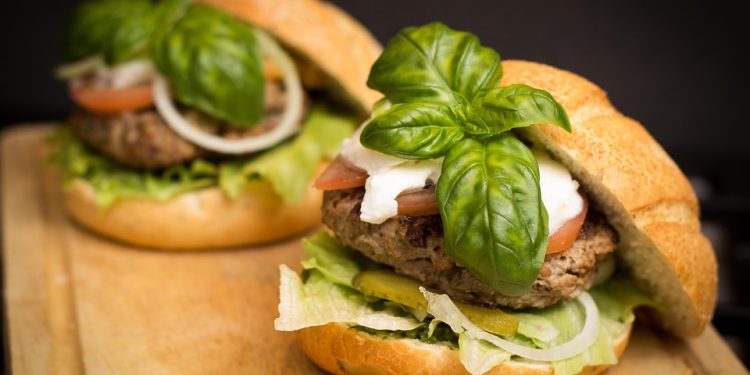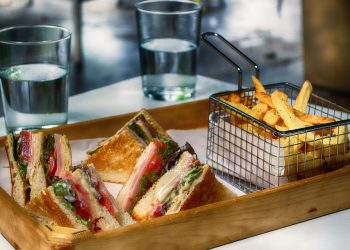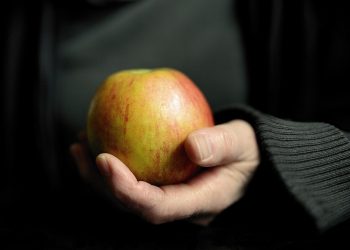Intermittent fasting (IF) has gained immense popularity as a dietary strategy not just for weight loss, but also for its potential health benefits, including improved insulin sensitivity, brain health, and cellular repair. But what exactly should you eat during your eating windows, and when should you eat it? This comprehensive guide will break down the best foods to consume during intermittent fasting, helping you maximize its benefits and sustain a healthy lifestyle.
Understanding Intermittent Fasting
Before diving into meal planning, it’s crucial to understand the basics of intermittent fasting. It’s not a diet that dictates *what* you eat, but rather *when* you eat. Common methods include:
- 16/8 Method: Fasting for 16 hours and eating within an 8-hour window. For example, eating between 12 pm and 8 pm.
- 5:2 Diet: Eating normally for five days a week and restricting calorie intake to around 500-600 calories on two non-consecutive days.
- Eat-Stop-Eat: Fasting for 24 hours once or twice a week.
- Alternate-Day Fasting: Fasting every other day.
The 16/8 method is generally considered the most sustainable and easiest to follow for beginners.
What to Eat During Your Eating Window
The quality of your food during your eating window is just as important as the timing. Focusing on nutrient-dense, whole foods will provide sustained energy, support your metabolism, and help you feel satisfied.
Prioritize Whole, Unprocessed Foods
This means opting for foods in their natural state, avoiding processed snacks, sugary drinks, and refined carbohydrates. Think fruits, vegetables, lean proteins, and healthy fats.
Focus on Macronutrients
A balanced intake of macronutrients – protein, carbohydrates, and fats – is essential for optimal health and energy levels during intermittent fasting.
Protein
Protein is crucial for muscle building and repair, satiety, and overall health. Aim to include a source of protein in every meal during your eating window.
- Lean Meats: Chicken breast, turkey, lean beef (sirloin, flank steak), pork tenderloin.
- Fish: Salmon, tuna, cod, mackerel, trout. These are rich in omega-3 fatty acids.
- Eggs: A complete protein source, packed with nutrients.
- Legumes: Lentils, chickpeas, beans. Excellent sources of protein and fiber.
- Tofu and Tempeh: Plant-based protein options for vegetarians and vegans.
- Greek Yogurt: A high-protein dairy option.
Example: A grilled chicken salad with mixed greens, vegetables, and a light vinaigrette dressing.
Carbohydrates
Choose complex carbohydrates over simple sugars for sustained energy and fiber intake. Fiber aids digestion and helps regulate blood sugar levels.
- Whole Grains: Quinoa, brown rice, oats, whole wheat bread (choose sprouted or sourdough varieties).
- Vegetables: Broccoli, spinach, kale, peppers, carrots, sweet potatoes.
- Fruits: Berries, apples, bananas, oranges. Choose fruits with lower glycemic index.
- Legumes: As mentioned above, legumes also provide a good source of carbohydrates.
Example: Oatmeal with berries and nuts for breakfast.
Fats
Healthy fats are essential for hormone production, brain function, and nutrient absorption. Include sources of monounsaturated and polyunsaturated fats in your diet.
- Avocados: A great source of healthy fats and fiber.
- Nuts and Seeds: Almonds, walnuts, chia seeds, flaxseeds.
- Olive Oil: Use for cooking and salad dressings. Extra virgin olive oil is preferred.
- Fatty Fish: As mentioned above, salmon, tuna, and mackerel are rich in omega-3 fatty acids.
- Coconut Oil: Use in moderation.
Example: Salmon with roasted vegetables and a drizzle of olive oil.
Meal Timing and Frequency
While the 16/8 method is popular, the specific timing of your eating window and the number of meals you consume within that window can be adjusted to fit your lifestyle and preferences.
- Two to Three Meals: Most people find that consuming two to three well-balanced meals during their eating window works best.
- Prioritize Protein: Ensure each meal contains a good source of protein to promote satiety and muscle maintenance.
- Listen to Your Body: Pay attention to your hunger cues and eat when you’re truly hungry. Avoid overeating just because it’s your eating window.
Sample Meal Plan for 16/8 Intermittent Fasting
Here’s a sample meal plan for the 16/8 method, with an eating window from 12 pm to 8 pm:
- 12:00 PM (Lunch): Large salad with grilled chicken breast, mixed greens, vegetables, avocado, and a light vinaigrette dressing.
- 3:00 PM (Snack): Greek yogurt with berries and a handful of almonds.
- 7:00 PM (Dinner): Salmon with roasted broccoli and quinoa.
This is just an example, feel free to adjust the meals and timing to suit your individual needs and preferences. Consider your workout schedule, work schedule, and personal preferences when planning your meals.
What to Drink During Your Fasting Window
Staying hydrated is crucial during intermittent fasting. However, be mindful of what you drink during your fasting window.
- Water: The best option for hydration.
- Black Coffee: Coffee without added sugar or milk is generally allowed.
- Unsweetened Tea: Herbal tea, green tea, and black tea are acceptable as long as they are unsweetened.
- Electrolyte Drinks: Consider adding electrolytes (sodium, potassium, magnesium) to your water, especially during longer fasting periods.
Avoid sugary drinks, juices, and anything with added calories during your fasting window, as they can break your fast.
Foods to Limit or Avoid During Your Eating Window
While intermittent fasting doesn’t restrict *what* you eat as strictly as some diets, it’s still beneficial to limit or avoid certain foods to maximize the health benefits and prevent weight gain.
- Processed Foods: Chips, crackers, cookies, pastries, and other processed snacks are often high in calories, unhealthy fats, and added sugars.
- Sugary Drinks: Soda, juice, sweetened tea, and energy drinks can lead to blood sugar spikes and crashes.
- Refined Carbohydrates: White bread, white rice, and pasta are quickly digested and can lead to hunger pangs.
- Excessive Alcohol: Alcohol is high in calories and can interfere with your sleep and hormone balance. Consume in moderation, if at all.
Tips for Success with Intermittent Fasting
Here are some tips to help you succeed with intermittent fasting:
- Start Slowly: Gradually increase your fasting window over time to allow your body to adjust.
- Stay Hydrated: Drink plenty of water throughout the day, especially during your fasting window.
- Plan Your Meals: Planning your meals in advance can help you stay on track and avoid unhealthy food choices.
- Listen to Your Body: Pay attention to your hunger cues and adjust your eating window as needed.
- Be Patient: It may take some time to see results with intermittent fasting. Be patient and consistent with your efforts.
- Consult a Healthcare Professional: If you have any underlying health conditions, consult a healthcare professional before starting intermittent fasting.
Potential Benefits of Intermittent Fasting
Intermittent fasting offers a range of potential health benefits, including:
- Weight Loss: By restricting your eating window, you may naturally consume fewer calories, leading to weight loss.
- Improved Insulin Sensitivity: Intermittent fasting can help improve insulin sensitivity, which can reduce your risk of type 2 diabetes.
- Brain Health: Some studies suggest that intermittent fasting may improve brain function and protect against neurodegenerative diseases.
- Cellular Repair: During fasting periods, your body can focus on repairing and removing damaged cells.
- Reduced Inflammation: Intermittent fasting may help reduce inflammation in the body.
Conclusion
Intermittent fasting can be a powerful tool for weight management and overall health. By focusing on nutrient-dense, whole foods during your eating window and staying hydrated during your fasting window, you can maximize its benefits and sustain a healthy lifestyle. Remember to listen to your body, start slowly, and consult a healthcare professional if you have any concerns. With careful planning and consistency, intermittent fasting can be a sustainable and effective way to improve your health and well-being.
Frequently Asked Questions (FAQs)
Here are some frequently asked questions about intermittent fasting meals:
Q: What can I drink during my fasting window?
A: Water, black coffee, and unsweetened tea are generally allowed during your fasting window. Avoid sugary drinks, juices, and anything with added calories.
Q: Will black coffee break my fast?
A: Small amounts of black coffee (without added sugar or milk) are unlikely to break your fast. However, consuming excessive amounts of caffeine may have other side effects.
Q: Can I take supplements during my fasting window?
A: It depends on the supplement. Some supplements, such as vitamins and minerals, are generally safe to take during your fasting window. However, other supplements, such as protein powders and branched-chain amino acids (BCAAs), can break your fast.
Q: Is intermittent fasting safe for everyone?
A: Intermittent fasting is not suitable for everyone. It is not recommended for pregnant or breastfeeding women, individuals with a history of eating disorders, or individuals with certain medical conditions. Consult a healthcare professional before starting intermittent fasting.
Q: How long does it take to see results with intermittent fasting?
A: The time it takes to see results with intermittent fasting varies depending on individual factors such as metabolism, diet, and exercise habits. Some people may see results within a few weeks, while others may take longer.
Q: What should I do if I feel hungry during my fasting window?
A: If you feel hungry during your fasting window, try drinking water, herbal tea, or black coffee. You can also try distracting yourself with activities such as reading, working, or exercising.
Q: Can I exercise while intermittent fasting?
A: Yes, you can exercise while intermittent fasting. In fact, exercising during your eating window can help you build muscle and burn fat. However, it’s important to listen to your body and adjust your exercise routine as needed.
Q: How do I break my fast correctly?
A: Breaking your fast gently is important. Start with a small, easily digestible meal. Avoid overloading your system with a large, heavy meal immediately after fasting. Opt for foods like bone broth, a smoothie with healthy fats and protein, or a small portion of cooked vegetables.
Q: Can I do intermittent fasting long-term?
A: Yes, intermittent fasting can be a sustainable long-term lifestyle choice for many people. However, it’s important to listen to your body, adjust your eating window as needed, and ensure you’re meeting your nutritional needs. Regular check-ins with a healthcare professional are recommended.
Q: How do I know if intermittent fasting is right for me?
A: The best way to determine if intermittent fasting is right for you is to try it and see how you feel. However, it’s always a good idea to consult with a healthcare professional before making any significant changes to your diet or lifestyle, especially if you have any underlying health conditions.












